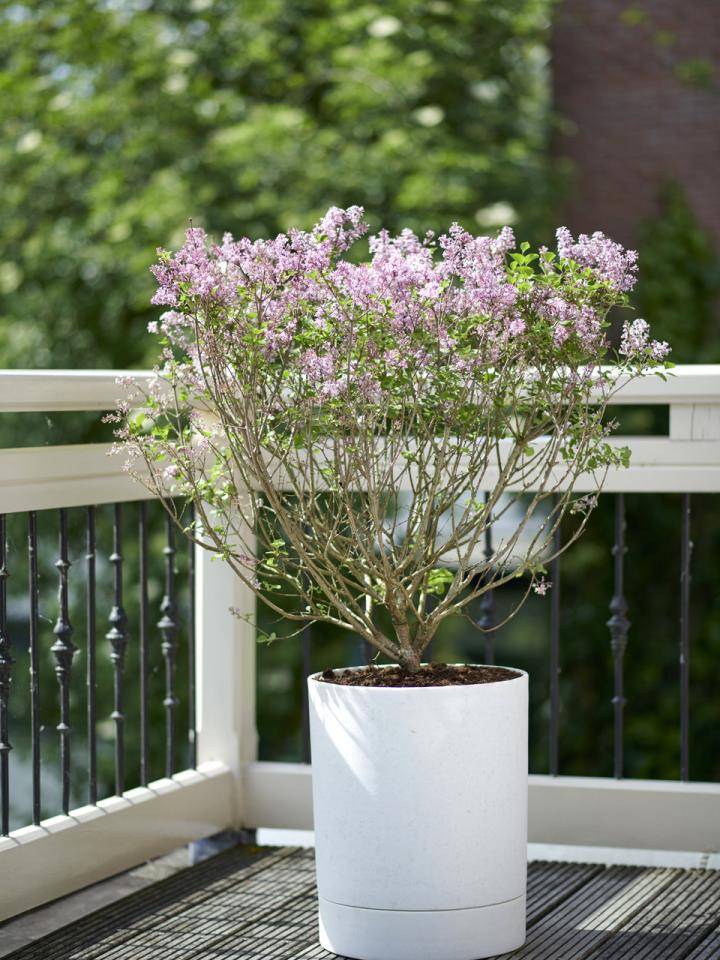Is there anything more delectable than the scent of a flowering lilac? The flowers smell of spring, growth and the joy of being outdoors. A common lilac (Syringa vulgaris) can reach a height of between 4 and 7 metres, but for those with less space there is the dwarf lilac (scientific name: Syringa meyeri 'Palibin'). This is a slow-growing species that remain small and does not exceed a height of 2 metres. It flowers in late spring and early summer with violet or pink flowers in small, dense panicles. Sometimes lilac treats us to a second round of flowers in the autumn. The heart-shaped leaves are green and soft. The shrub loses its leaves in autumn, but is hardy.
Fragrant on the rocks
Lilac is a member of the olive family and originates from south-east Europe. The shrub grows particularly abundantly on rocky slopes in the Balkans, and the area is rich with the scent of lilac during the flowering season. The cultivated versions have more varied colours, from white to dark purple.
Trivia
- Lilac only gets going properly in terms of flowering after a couple of years in the same spot, and can also skip a year of flowering in order to regain its strength
- The name is derived from the very modest Greek nymph Syringa, who nonetheless allowed herself to be seduced by the forest god Pan, who played music for her on his flute.
- Greek shepherds used to make pipes and flutes out of lilac wood because the young wood was easy to hollow out. The Greek word 'syrinks' means ‘pipe’.





